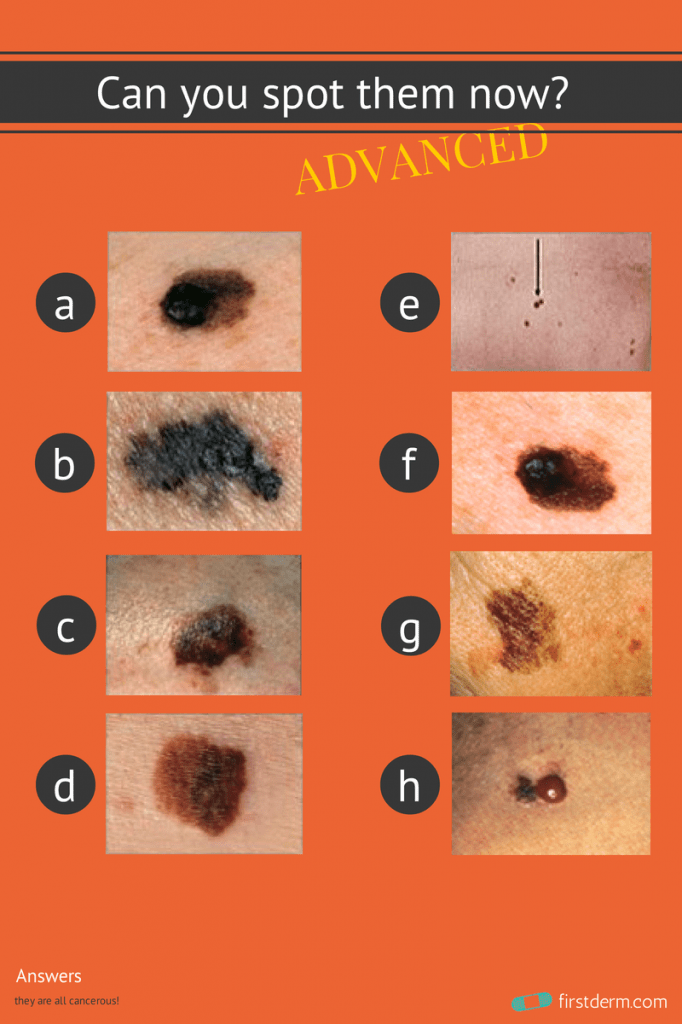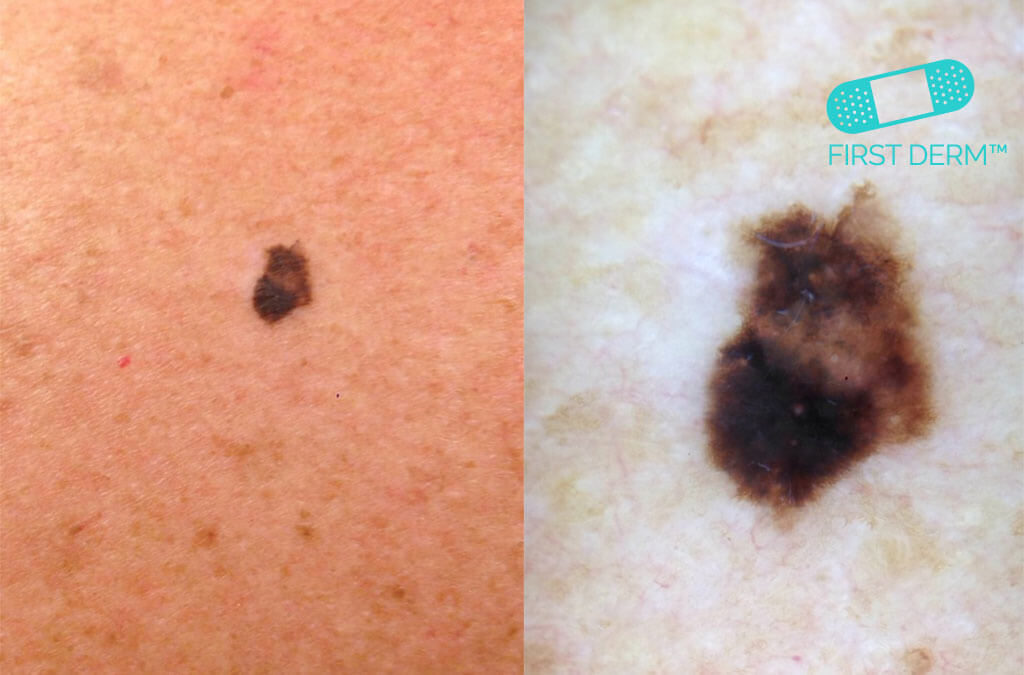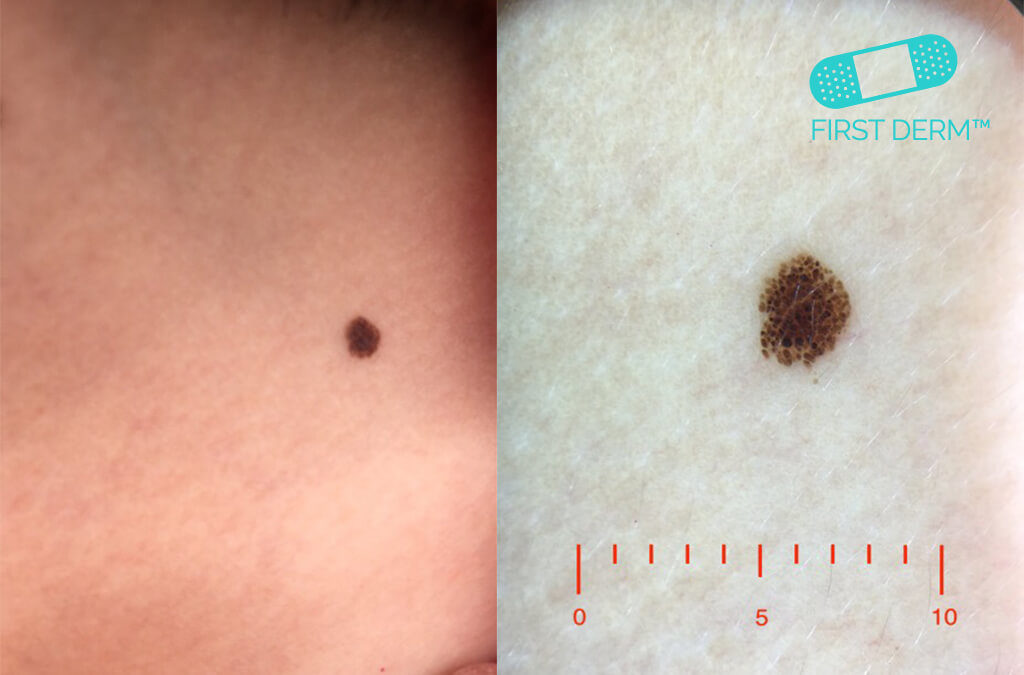How to spot a cancerous mole
25% of melanomas arise from an existing mole. That means that the majority of melanomas are new moles – so they should be easy to spot, right?
Unfortunately, new moles are often overlooked, and ones that you’ve had your whole life can change without you realizing it. And change is a major indicator of skin cancer.
Click here to try out our FREE Skin Image Search.

Moles are extremely common. Some people are born with them and others can develop moles later in life due to hormonal changes like puberty or pregnancy. They form in the epidermis – the top layer of the skin. This is where the melanocytes produce melanin, causing skin pigmentation. Melanin production increases when you spend more time in the sun, and when melanocytes group together, they form a mole.
Click here to try out our FREE Skin Image Search.
The ABCDE Method
The American Academy of Dermatology recommends the ABCDE method for monitoring your moles: (See images below for examples.)
- Asymmetric shape – non-cancerous moles are symmetrical
- Border irregularity – melanomas have notches or blurred edges while moles are more sharply defined
- Color variability – the color is distributed unevenly in cancerous moles
- Diameter – moles are typically smaller than ¼ inch
- Evolution – changes in size, shape, and color can indicate a melanoma
- Extra features – if a new mole is bleeding or itching, it could be cancerous
If you notice any of these features, consult your doctor for a full skin check. The doctor may have the mole removed and if cancerous, and will also check to see if the cancer has spread. If it has spread, chemotherapy and radiation therapy can kill cancer cells. It’s much easier to treat if the melanoma is detected early!
People with naturally large moles have a higher risk for developing skin cancer. People with a history of frequent sunburns also have a much higher risk. Those with fair skin, blonde or red hair, and a family history of melanoma are also more susceptible to skin cancer.
Early diagnosis is crucial for treating melanomas. Even if you see the doctor for regular check-ups, it’s important to inspect your freckles and moles every few months to see if any of them have changed shape or grown.
Click here to try out our FREE Skin Image Search.
If you thought this we easy, try our new quiz here
Moles up close
This is a melanoma. The edges have notches, the color is inconsistent, and it is asymmetrical.
This mole is tricky; it is actually benign, though it may be confused for a cancerous mole. The edges are slightly blurred and the color is not perfectly consistent. This is called a dysplastic mole because it appears different from other moles on the body. People with multiple dysplastic moles may have an increased risk of developing melanomas even though the moles themselves are not cancerous. Therefore, it’s a good idea to have the dermatologist check it out.
Get peace of mind and do not wait!
We had a recent user that decided not to pay for a dermatologist to look at a picture of his mole, our team of dermatologists think it looks like a melanoma. What do you think? Read the full story here
Click here to try out our FREE Skin Image Search.
Sources
Ask a Dermatologist
Anonymous, fast and secure!

The Specialist doctor from the University Hospital in Gothenburg, alumnus UC Berkeley. My doctoral dissertation is about Digital Health and I have published 5 scientific articles in teledermatology and artificial intelligence and others.




